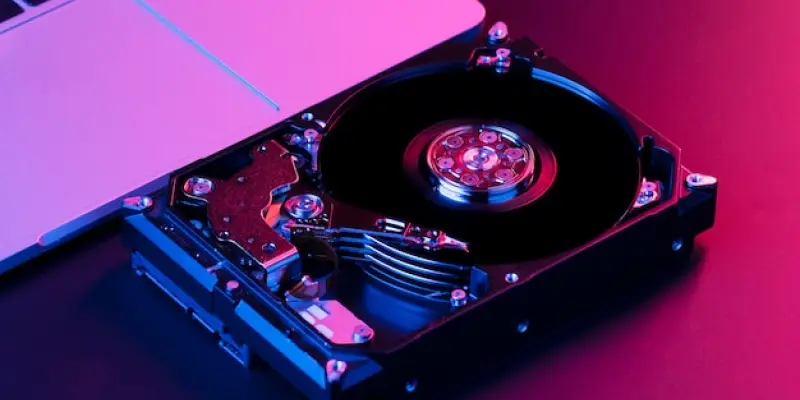Nvidia has officially unveiled its new RTX 5060 Ti and RTX 5060 graphics cards, following months of speculation, leaks, and rumors. The new cards are priced at $429 for the 16GB 5060 Ti, $379 for the 8GB 5060 Ti, and $299 for the 8GB 5060. The 5060 Ti is available starting today, April 16, while the RTX 5060 release is set for next month. Gamers have eagerly awaited these more budget-friendly GPUs, especially after the problematic launch of the higher-end RTX 50-series cards. The RTX 5060 Ti offers a notable improvement over its predecessor, the 4060 Ti, incorporating 4,608 CUDA cores compared to 4,352, and a high boost clock of 2,572MHz. With the new 28 Gbps GDDR7 memory, the memory bandwidth increases by over 50%, though the memory bus remains a restricted 128-bit. This configuration comes with a slightly higher TDP of 180W, compared to 165W for the 4060 Ti.
Performance and Specifications
The introduction of the RTX 5060 Ti and RTX 5060 comes amid expectations of gaming and performance improvements while maintaining affordability. Nvidia’s senior director of GeForce product management, Justin Walker, stated that the 5060 Ti is expected to be 20% faster than its predecessor, the 4060 Ti, while the 5060 is projected to be 20-25% faster than the 4060. Performance graphs from Nvidia suggest more modest gains in specific games, like Resident Evil, indicating the necessity for third-party benchmarks to validate these claims. The RTX 5060 features 3,840 Blackwell CUDA cores, a significant increase from the 3,072 found in its predecessor, along with a boost clock just shy of 2.5GHz and the same efficient GDDR7 memory as the 5060 Ti.
The RTX 5060’s enhancements should not be understated, as it shares the improved memory bandwidth of the 5060 Ti while being equipped with 8GB of VRAM. It enters the market at the same price point as its predecessor, $299, though future market dynamics will determine whether this will hold. As with any new GPU release, actual in-game performance and real-world benchmarks will be critical in assessing the true impact of these new cards. Their effectiveness in leveraging multi-frame generation and ray tracing capabilities through Nvidia’s DLSS technology will ultimately determine whether they deliver on the promised performance gains.
Market Impact and Availability
These new cards mark Nvidia’s continued efforts to cater to mainstream gamers and professionals who seek enhanced performance without breaking the bank. The pricing strategy for the 5060 Ti models is lower than that observed in previous generations, making high-quality graphics cards more accessible. The 5060 Ti’s and 5060’s potential for significant performance improvements aligns with the increasing demand for higher frame rates and better-resolution capabilities in modern games. However, the real impact of these GPUs will be better understood after robust third-party testing and analysis, as in-house performance metrics often do not fully reflect real-world scenarios. Both cards are expected to shine in titles that benefit from Nvidia’s advanced technologies, but their performance in non-optimized games and applications remains to be seen. The budget-friendly positioning of these GPUs will be particularly important, given the prevailing economic conditions and the competitive landscape of the graphics card market. Consumer response and feedback will play a crucial role in determining the long-term success of these products. Gaming enthusiasts and tech reviewers alike are awaiting comprehensive third-party reviews that will shed more light on whether Nvidia’s claims hold true across a wider range of applications and use cases.
Future Considerations
The introduction of the RTX 5060 Ti and RTX 5060 aims to enhance gaming performance while keeping costs reasonable. Nvidia’s senior director of GeForce product management, Justin Walker, indicated that the 5060 Ti would be 20% faster than the 4060 Ti, and the 5060 would deliver a 20-25% improvement over the 4060. Official performance graphs suggest moderate gains in specific games, like Resident Evil, underscoring the need for third-party benchmarks to confirm these claims. The RTX 5060 boasts 3,840 Blackwell CUDA cores, up from its predecessor’s 3,072, and has a boost clock near 2.5GHz, along with efficient GDDR7 memory, similar to the 5060 Ti. The RTX 5060’s increased memory bandwidth, along with its 8GB of VRAM, marks a significant upgrade. Priced at $299, the same as its predecessor, its affordability will depend on future market trends. Critical evaluations will rely on in-game performance and real-world benchmarks. The cards’ success in using multi-frame generation and ray tracing, supported by Nvidia’s DLSS technology, will be crucial in determining their true performance benefits. As always, actual gameplay and third-party reviews will ultimately reveal the real impact of these new GPUs.

